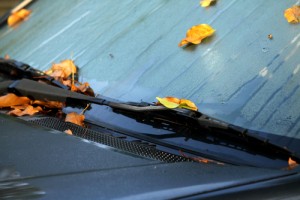Jul 9, 2015
When taking care of the preventative maintenance on your vehicle, there are some things that have a set schedule, and others that are handled on an “as needed” basis. It is commonly understood to change your oil every three thousand miles or to flush your transmission fluid every thirty thousand miles. While some actions are just ingrained in your memory, there are other preventative steps that should take place, but do not have a set time associated with them and are often forgotten.
One of the steps that does not have a certain time table associated with it is your vehicle’s wiper blades. While some experts recommend changing your blades annually, others recommend waiting until the blades stop working effectively before changing them as different brands of blades can have different life spans.
Since there is no consensus on how frequently you should replace your wiper blades, we’ve put together five tips to help you get the most out of your windshield wipers before the blades have to be changed.
- Always shut off your wipers before turning off your vehicle. If you leave your wipers on when you turn your vehicle off, the wipers will remain operational the next time the vehicle is started. Leaving the wipers on is bad for the wiper blades because it causes unnecessary wear and tear.
- Never run your wipers across a dry windshield. If you have dirt or dust on your windshield that needs to be cleaned off, use your washer fluid to help clean it. Running your wiper blades across a dry windshield allows dirt, dust, or other particles to get caught between the wiper blade and the windshield which causes the blade to break contact with the windshield. This standing debris will also cause the wipers to be less efficient over time.
- Always clean leaves, pine needles, or other debris off of your windshield before turning your wiper blades on. It is very easy to just turn your wipers on to wipe the leaves away, but this practice can cause problems down the line. If a piece of a leaf or pine needle gets stuck between the wiper blade and the windshield, it allows for water to get between the wiper blade and windshield as well. Operating the windshield wipers with standing debris can also cause small dents in the rubber of the wiper blade that will allow water to get through even after the debris has been removed.
- Wipe your blades down with sandpaper at least twice a year. The natural build-up of dirt and debris on your wiper blades over time can cause the blades to break contact with the windshield. Wiping them down with sandpaper twice a year will remove any build-up and restore the blades ability to cleaning wipe across the windshield.
- If there is a freeze, do not run your wipers until the windshield has defrosted. Like the leaves and pine needles, it is easier use your wipers to clean the ice off of your windshield, but running your wipers over ice is not good for the blades. Just like any other debris, ice will get between the blade and the windshield, making it less effective. In fact, if there is a freeze in the forecast, it is a good idea to move your wiper blades to the up position, off of the windshield before leaving your vehicle for the night. By placing your wiper blades in the up position, you are preventing your wipers from freezing to the windshield, which would further damage the rubber.
When it is time to change your wiper blades, most experts recommend using blades with a silicon or teflon coating. If you need a recommendation for the correct wiper blades for your vehicle, or don’t feel comfortable changing your own blades, contact our service department to set up an appointment.



![[Facebook]](https://www.southwestvw.com/blogs/1058/wp-content/plugins/bookmarkify/facebook.png)
![[LinkedIn]](https://www.southwestvw.com/blogs/1058/wp-content/plugins/bookmarkify/linkedin.png)
![[Twitter]](https://www.southwestvw.com/blogs/1058/wp-content/plugins/bookmarkify/twitter.png)
![[Yahoo!]](https://www.southwestvw.com/blogs/1058/wp-content/plugins/bookmarkify/yahoo.png)
![[Email]](https://www.southwestvw.com/blogs/1058/wp-content/plugins/bookmarkify/email.png)


